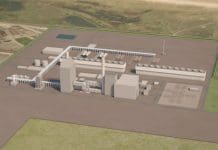Renewable Energy company, RWE Innogy, urges the Prime Minister to maintain his support for wind farms and suggests reforms that would increase efficiency and reduce the number of turbines.
How do you cut the number of wind turbines, reduce their reliance on subsidy and increase the energy produced?
That’s the challenge we in the onshore wind industry face. The Prime Minister says people are “fed up” with the number of wind farms and there ought to be no more subsidy in the next parliament. As it happens, the polls show strong public backing for onshore wind power, but we recognise that some people have an issue with wind farms.
However, there is a way out of the conundrum that will satisfy almost everyone: fewer, more efficient and visually improved turbines.
Like all good businesspeople, we’re constantly looking to lower costs and be more efficient in our operations, something that will reduce subsidies over the long-term.
There are two ways in which we can reduce the number of turbines while boosting their output.
Firstly, we want to replace older turbines at existing sites with newer, more efficient models, as we propose to do at our Kirkby Moor wind farm in Cumbria. Secondly, we’re looking to introduce slightly larger turbines at new build projects. As a general rule, adding an extra 5 metres of height would boost the energy output of a turbine by over 10%.
Taller turbines can access ‘better’ wind – that is, wind unaffected by low-level turbulence – and carry bigger blades. That reduces the number of wind turbines you need at a site, cutting manufacturing costs, but increasing the amount of electricity produced.
Unfortunately, planning precedents in the UK make it difficult for a wind turbine to be installed on land if it is more than 125 metres from base to tip, and it means we can’t buy from a standardised set across the European supply chain.
If The Department for Communities and Local Government issued updated guidance to local planning officers, a number of opportunities would open up. By permitting a small increase in height, the UK could reduce the number of turbines at wind farms, see an increase in electricity produced, and reduce its dependence on foreign fossil fuels. The move would also help us reduce costs and therefore subsidies, whilst creating a British wind turbine supply chain that could sell to a wider market across Europe.
None of this means people will see ‘monster turbines’ springing up across the countryside. We only need to go a little bit higher, an additional 5 to 10 metres. People will see little discernible visual difference in the size of turbines.
Back in 2012, the Prime Minister told planners to “get off people’s backs” or face the consequences. Embracing that reforming approach on wind turbines, as well as in dealing with the backlog of onshore wind applications stuck in the planning system, can deliver the results we all want to see – less subsidy for onshore, less impact from developments and cleaner domestic energy that keeps the lights on.
Mike Parker
Head of Onshore UK
RWE Innogy UK
Tel: 01793 474100
















